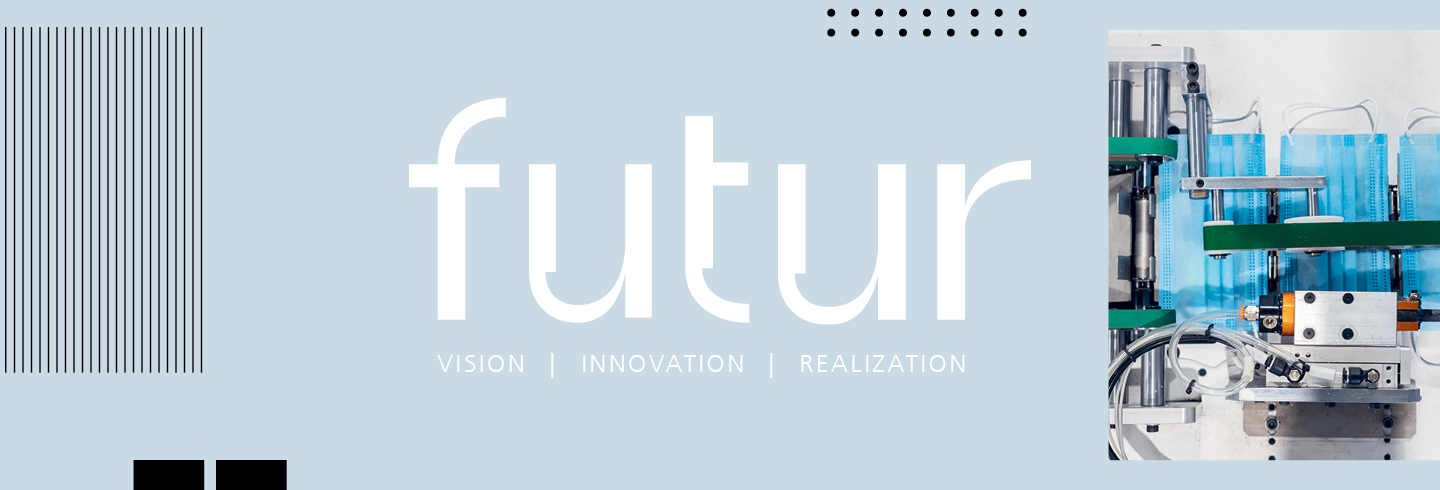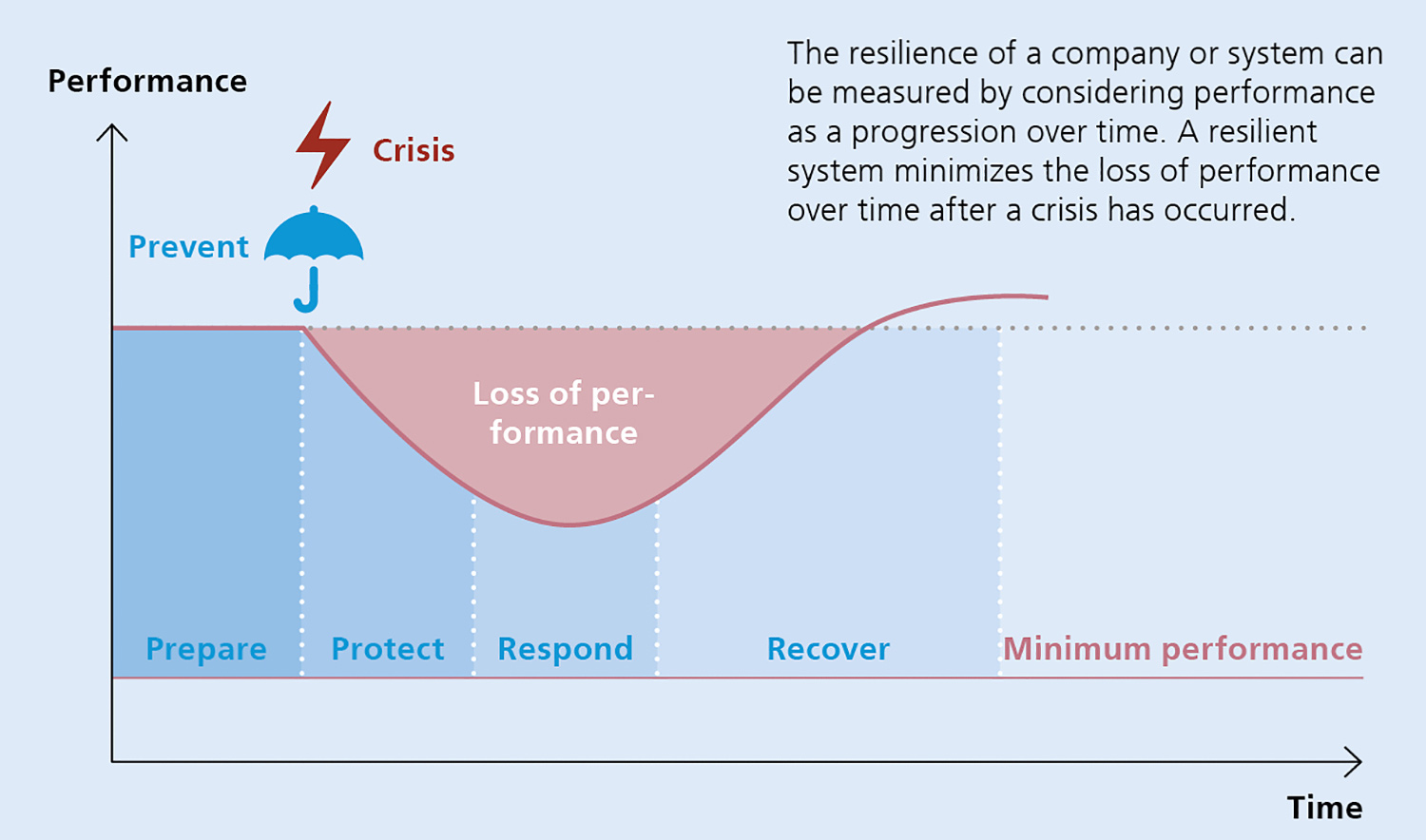Resilience for All!
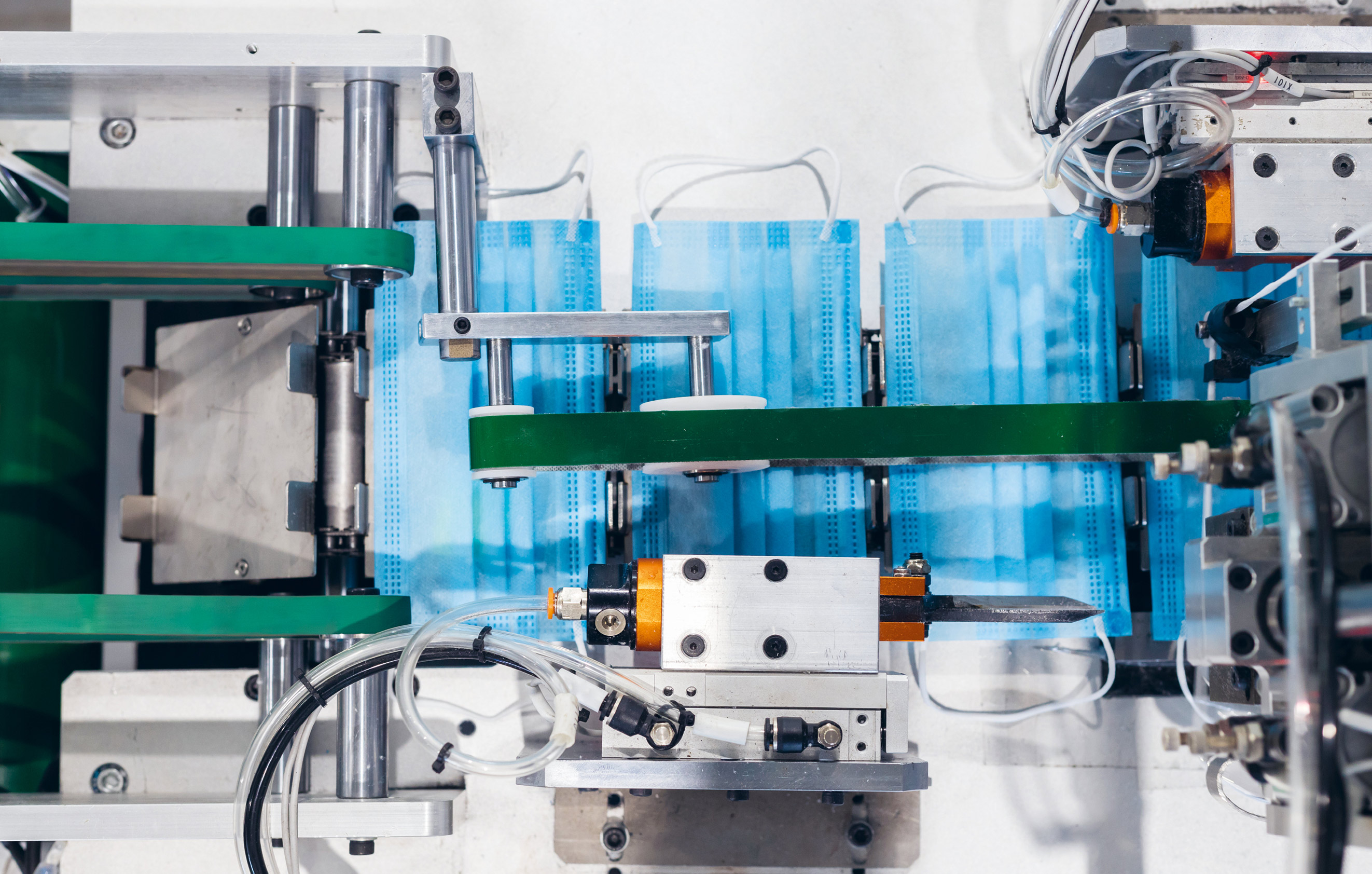
Corona versus the German economy: The outcome of this match is yet to be decided. What is certain is that the pandemic has hit the economy hard. According to surveys conducted by the online portal Statista in June 2020, around 77 percent of domestic companies expected a decline in sales in 2020. More than 50 percent of the companies stated »that they will not survive for more than six months if the restrictions due to the corona pandemic are maintained for a longer period of time.« The challenges are manifold. They range from disrupted and unreliable supply chains and distribution channels to the customer to loss of the entire business base, such as in the event sector.
But other stories have also been written during this pandemic. For example, a medium-sized plant manufacturer from the German state of Thuringia managed to add a system for producing medical protective masks to its portfolio within six weeks in spring 2020. Until then, the company had focused on areas that were hit particularly hard by the crisis. The new system was able to partially compensate for revenue losses in this area and significantly reduce the number of short-time work hours.
Six weeks from the drawing board to the first delivery: Looking at such results, one realizes that the recipe for success, in addition to excellent management, is often that an holistic production system (HPS) is consistently and proactively implemented with regard to resilience – even if the companies concerned are not always aware that they are applying resilience principles. But what does it actually mean to trim an HPS for resilience?
An HPS strives to organize all company divisions close to or directly involved in production according to the same principles and to control their processes with the same methods and systems. By »resilience« we mean the ability to not only survive crises and setbacks – regardless of whether they are caused by internal or external disruptive factors – as an individual or as a group, but also to emerge from them stronger and capable of action. Unlike traditional risk management, which focuses on identifying and dealing with specific risks within a company’s processes, resilience management takes a more holistic approach.
Instead of simply asking which factors could have a negative impact on the company’s own economic performance, it sheds light on which measures can be used to maintain or improve performance before, during, and after the crisis. Crisis management is divided into five phases, as depicted in the diagram on the right, for which various instruments, responsibilities, and approaches are defined.
Different paths, same goal
But how do you integrate resilience into an HPS? There are various approaches to do so. Firstly, you could try to build an entirely new management system, applying a concept based on resilience phases. However, experience with introducing lean management over the past thirty years or so shows that the introduction process is complex and lengthy and that no rapid successes can be expected.
In addition, this procedure would not be beneficial, as evidenced by companies that already have an HPS organized according to lean principles. They could attempt to include the resilience phases as additional aspects in the goals and design principles of the production system. However, this increases the complexity of the overall system, making the entire HPS more cumbersome.
An example: HPS can certainly define how to deal with external disruptions. However, the types of disruptions that are defined are usually relatively simple breaks in the supply chain or events that could lead to dissatisfied customers. Larger disruptions, such as the failure of the entire supply network due to border closures or the termination of a customer relationship due to unexpected customer insolvency, are not covered by an HPS. This is a good thing because developing procedures for averting all conceivable disruptions and integrating them into an HPS would result in immense effort and the entire system being considerably sluggish.
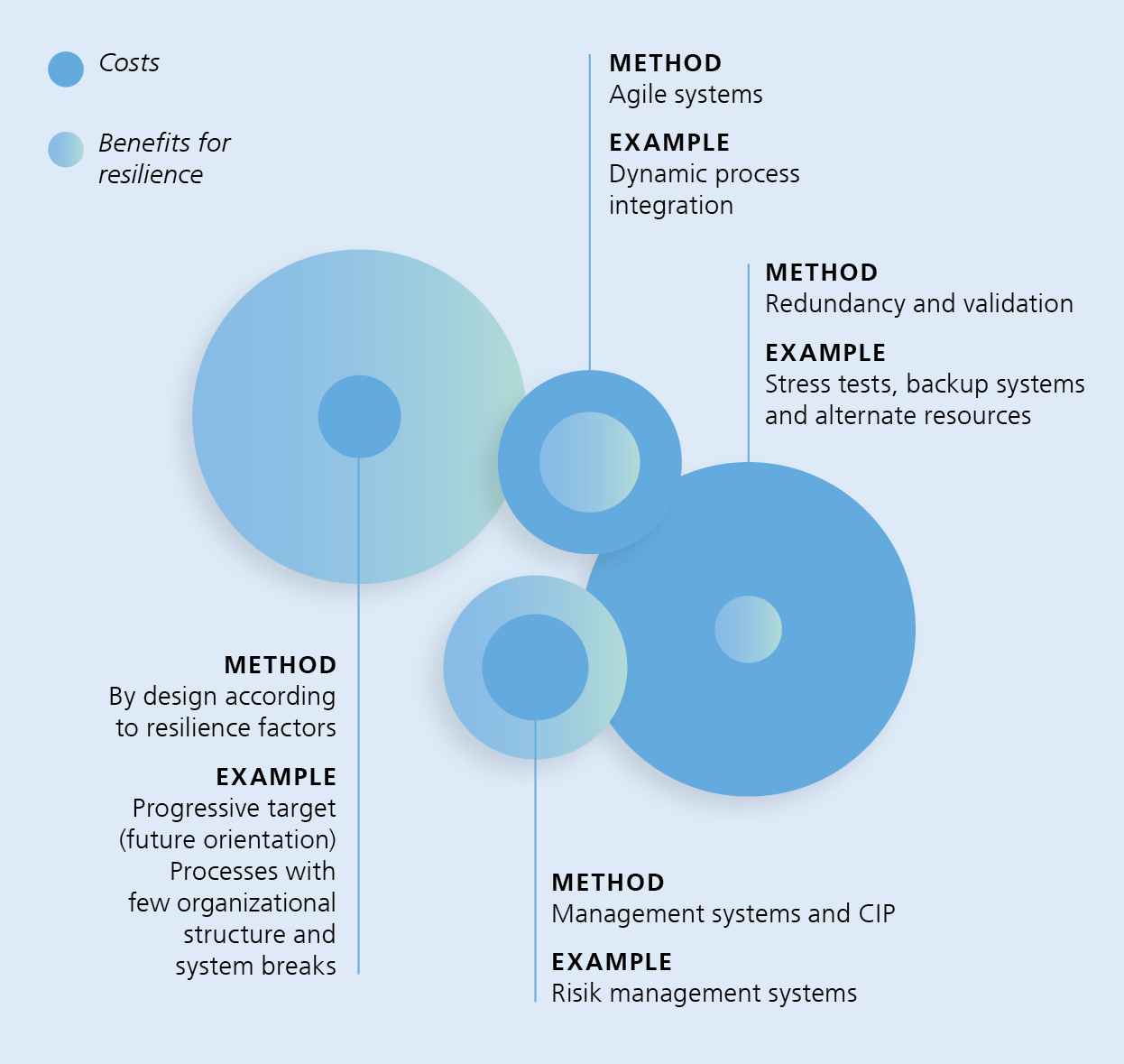
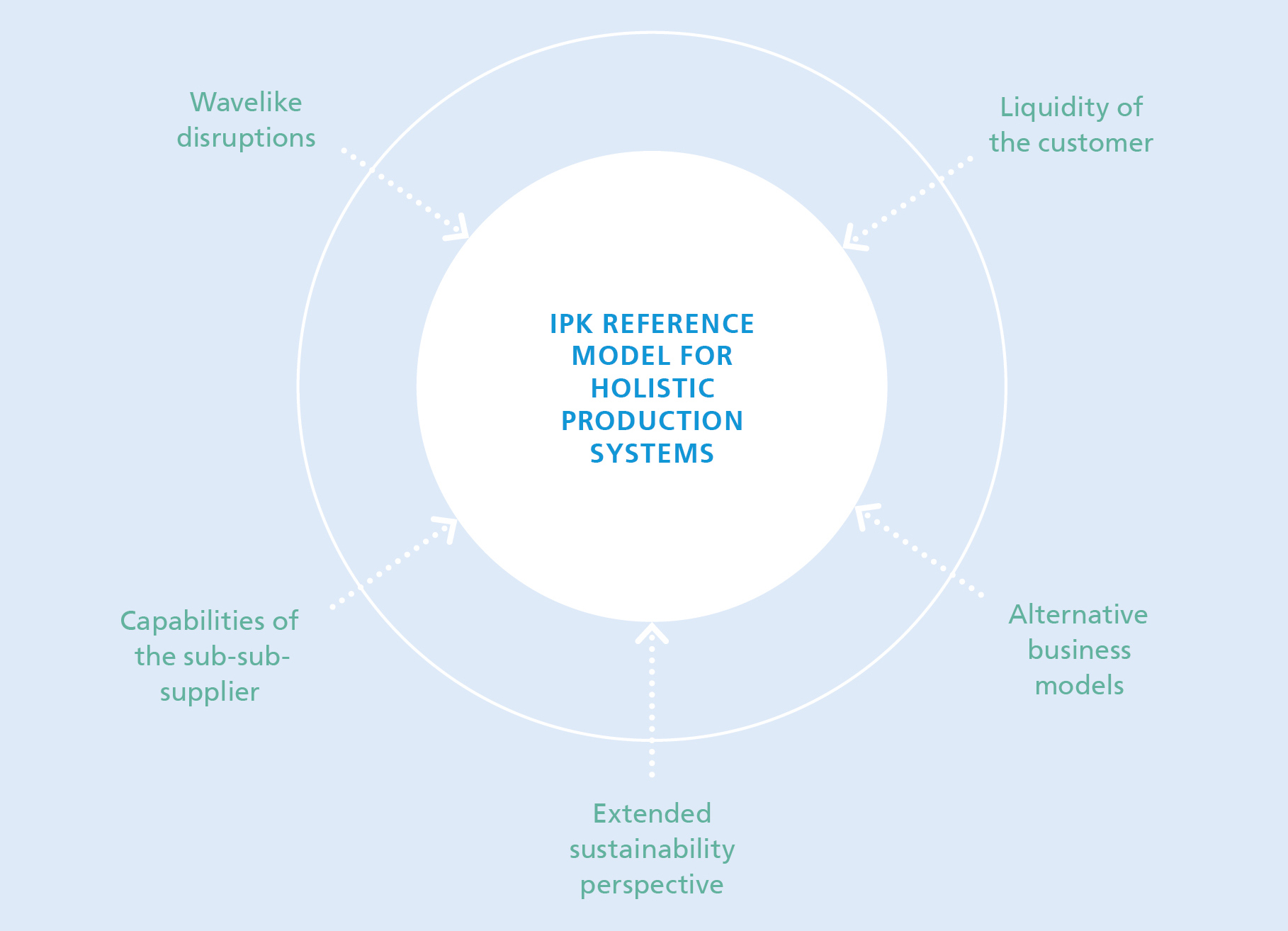
Preparing resilient processes
Rather, the solution should be to include resilience in the application of an HPS. Or even better, to set up the entire company from the outset in such a way that all processes promote resilience. Additionally, the processes should be set up with few organizational and system breaks. Also, when implementing the processes in times of crisis, an increased degree of flexibility should be permitted. In this regard, companies can learn from the principles of the safety and protection sectors. In those sectors, procedures are applied that, regardless of the specific cause of the situation, include the same mechanisms for preparing, avoiding, and preventing negative influences.
For example, the structural and procedural organization of a police or fire department crisis response center is always self-similar, regardless of whether the cause is a natural disaster or a pandemic. In a corporate context, this means that even during normal operation, resilience principles must be applied in a forward-looking, standardized manner. Training for handling exceptional situations must be provided and provisions made to establish a crisis management team. Handling critical situations can be rehearsed regularly, such as in simulations, similar to the way fire alarms are handled in schools. When roles and responsibilities have been internalized, flexible measures can be taken to deal with the incident in the event of a crisis, regardless of the cause. For this purpose, an assessment of the external environment in conjunction with internal processes and capabilities must first be made possible. Situational awareness concepts are helpful for this, as they ensure well-founded decision-making and the optimization of processes already during normal operation.
Provided the application of such concepts has been rehearsed regularly under normal circumstances, situational awareness achieves its full impact in an exceptional situation, thereby also enabling companies to successfully cope with unforeseen events, also called »black swan events.«
Another useful extension of an HPS is inverse risk analysis. Instead of simply considering from the perspective of a possible event how dangers over which we have no influence can be averted – such as a natural disaster – the perspective is inverted: Strategies are developed for achieving a desired state of performance in the event of a failure of resources, processes, or even business relationships. Such considerations lead to resilience through flexibility. For example, production facilities and processes can be designed so a company’s vertical range of manufacture can pivot within a defined time window if the supply chain breaks down.
»MacGyverism,« also known as »bricolage,« takes it one step further. In this case, employees are trained not to wait for all the resources necessary to fulfill their tasks to be available. Instead, they learn to find solutions in an exceptional situation with currently available resources. However, this principle should be applied with caution so that optimized process flows are not jeopardized during normal operation.
Networking for success
Finally, institutional networking can significantly increase the resilience of companies. Observations have shown that companies that were able to fall back on many different partners during the current pandemic – whether for sharing experience or in technology and supply relationships – were able to overcome the challenges much better than others. One of the recipes for success of the Thuringian equipment manufacturer mentioned above, for example, is that its network also included partners who had no connection to its core business. Only in the pandemic situation did their value for maintaining the company’s operations become apparent. Networking also makes it possible to dispense with far-reaching structural and operational expenses, such as those associated with creating redundancy and additional intensive precautionary measures to avert crises.
The diagram on the left shows how different approaches to resilience differ in terms of cost and benefit. Further examples of solutions for increasing resilience for manufacturing companies can be found on the right. In order to anchor the strategies mentioned for increasing resilience in companies, especially in the production sector, Fraunhofer IPK extends the reference model for holistic production systems with important aspects of resilience. Essential characteristics include the integration of liquidity as well as the dynamic configuration of the production system according to the phases of an event. This aims at making it possible to, for instance, shift value chain segments around according to the abilities of partners ad hoc and securely in such a way that end-to-end processes are not interrupted.
Solutions for increasing resilience in companies
- Constant ramp-up and temporary series production:
Scalable pilot production across the entire process using different degrees of automation - Liquidity orientation: Design interfaces and systems in such a way that defined costs only arise when a new variant is introduced (e.g., in respond and recover)
- Efficient monitoring of changing environment and black swan effects: Adaptive interactive situational awareness, AI-based pattern recognition of process anomalies
- Development of event-independent crisis organization: Adaptive virtual response center based on principles from the security sector but under the consideration of liquidity aspects
- Dynamic and secure shifting around of value chain segments: Maturity-based cross-organizational technology chain generation (incl. distribution and integration) and assurance (certification)
- Organization-wide integration of business model, product, production, and distribution development in regulated markets: Networking of different models with the help of adaptors and synchronization systems such as the High Level Architecture (HLA), virtually assisted training of partners
 Fraunhofer Institute for Production Systems and Design Technology
Fraunhofer Institute for Production Systems and Design Technology